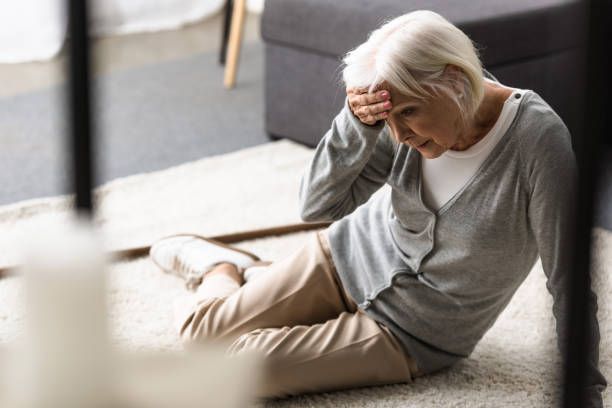Preventing Senior Falls: What to Look For
As people age, the risk of falling becomes a significant concern. Falls are one of the leading causes of injury and hospitalization among older adults, with potentially serious consequences, such as fractures, head injuries, and loss of independence. According to the Centers for Disease Control and Prevention (CDC), more than one in four seniors over the age of 65 experiences a fall each year, and the chances of falling again increase after the first incident.
However, falls are not an inevitable part of aging. With awareness, proactive measures, and attention to certain risk factors, falls can often be prevented. In this article, we will explore what to look for when assessing fall risk and steps you can take to help prevent falls in seniors.
- Physical Health Factors
The physical health of an aging adult plays a critical role in their risk of falling. As we age, changes in strength, balance, and mobility can increase the likelihood of falls. Here are some key health factors to monitor:
Muscle Weakness and Balance Issues
As muscle mass and strength decline with age, seniors may find it harder to maintain balance or perform everyday tasks. Lower body weakness, particularly in the legs, is one of the strongest predictors of falls. Seniors should be encouraged to participate in strength-training exercises, physical therapy, or balance-enhancing activities like Tai Chi or yoga to help build strength and improve stability.
Vision Problems
Poor vision can greatly increase the risk of falls, as seniors may not see obstacles, steps, or uneven surfaces clearly. Common age-related eye conditions such as cataracts, glaucoma, and macular degeneration can contribute to visual impairments. Regular eye exams and updated prescriptions for glasses or contact lenses are essential for maintaining good vision and minimizing fall risks.
Foot Problems
Foot pain, improper footwear, or conditions like arthritis can interfere with mobility and balance. Shoes should be well-fitting, with non-slip soles and adequate support. Encourage seniors to avoid walking in socks, slippers without proper soles, or high heels, which can all contribute to falls.
Chronic Conditions
Chronic health conditions such as arthritis, diabetes, and heart disease can affect balance and mobility. Additionally, conditions like Parkinson’s disease, which causes tremors and stiffness, or osteoporosis, which weakens bones, make falls more dangerous. Monitoring and managing these conditions through medication, physical therapy, and lifestyle adjustments is essential for reducing fall risks.
Medications
Certain medications, particularly those that affect blood pressure, balance, or cognition, can increase the risk of falling. Medications like sedatives, antidepressants, or those that cause dizziness or drowsiness may impair coordination. It’s important to regularly review medication regimens with a healthcare provider to ensure that there are no drugs or combinations of drugs that increase fall risk.
- Home Environment Hazards
The home is where most falls occur, often due to unnoticed hazards that can easily be addressed with a little foresight. Making the home safer for seniors can drastically reduce the risk of falls. Here are some things to watch for:
Clutter and Obstacles
One of the simplest but most overlooked risks is clutter in walkways. Shoes, cords, or other objects left on the floor can easily trip someone who is not paying attention or who has poor vision. Ensuring that hallways, staircases, and living areas are free of obstacles can help prevent falls.
Loose Rugs and Carpeting
Area rugs, especially those without non-slip backing, are a common culprit in senior falls. Loose edges or bunching in carpets can catch on shoes, walkers, or canes. Remove loose rugs or secure them with non-slip mats or adhesive strips. In homes with wall-to-wall carpeting, ensure that it is tightly secured to avoid tripping hazards.
Inadequate Lighting
Poor lighting can cause seniors to misjudge distances or fail to see obstacles. Bright, consistent lighting is crucial, especially in hallways, staircases, and bathrooms. Installing night lights in frequently used areas such as the bedroom and bathroom can be particularly helpful for seniors who get up during the night.
Bathroom Safety
The bathroom is a high-risk area for falls due to slippery surfaces. Installing grab bars near the toilet and inside the shower or bathtub can provide stability. Non-slip mats or adhesive strips on the shower floor and bath steps can prevent slipping. Seniors may also benefit from a shower chair and a hand-held showerhead to reduce the risk of falling while bathing.
Stairs
Stairs are particularly dangerous for seniors, as a fall from even a small height can cause significant injuries. Handrails should be installed on both sides of the staircase, and they should be sturdy and extend beyond the top and bottom steps. Treads should be clearly marked, well-lit, and free of any obstacles or clutter.
- Behavioral and Cognitive Factors
In addition to physical and environmental factors, certain behaviors and cognitive issues can increase a senior’s risk of falling. Understanding and addressing these behavioral risks is crucial.
Rushing or Multi-Tasking
Seniors who try to hurry through daily tasks or do several things at once may be more likely to trip or lose their balance. Encouraging a slower, more deliberate pace, especially when moving from one room to another or getting in and out of bed, can reduce the risk of falling.
Risky Behaviors
Seniors may sometimes take unnecessary risks, like climbing on stools or chairs to reach something high or walking without proper support. Encouraging the use of assistive devices, like canes or walkers, even for short trips, can help maintain stability and prevent falls.
Cognitive Impairment
Cognitive issues such as dementia or Alzheimer’s disease can increase fall risk due to confusion, disorientation, or poor judgment. Seniors with cognitive impairment may not realize they are at risk or may forget to use their mobility aids. Caregivers should provide constant supervision, especially during tasks that involve movement or potential hazards, such as going to the bathroom or preparing meals.
Fear of Falling
Ironically, the fear of falling can actually increase the likelihood of a fall. When seniors become overly cautious, they may limit their movement, leading to muscle weakness and reduced balance. It’s important to help seniors remain active and confident while taking appropriate precautions. Building strength and balance through exercise and encouraging safe mobility can help alleviate the fear and keep them more physically capable.
- Lifestyle Changes and Preventive Measures
Making certain lifestyle changes and implementing preventive strategies can also go a long way in reducing fall risk for seniors.
Exercise and Physical Activity
Staying active is one of the best ways to prevent falls. Regular exercise strengthens muscles, improves balance, and enhances flexibility. Seniors should engage in exercises that promote balance, such as walking, water aerobics, or Tai Chi. Physical therapists can also work with seniors to develop personalized exercise routines that address their specific needs.
Healthy Diet
Nutrition plays a role in preventing falls. A well-balanced diet that includes plenty of calcium and vitamin D can help keep bones strong, reducing the risk of fractures if a fall does occur. Hydration is also important, as dehydration can lead to dizziness or lightheadedness, which can cause falls.
Foot Care and Proper Footwear
Regular foot checkups, treatment for any foot conditions, and wearing well-fitting shoes with non-slip soles can greatly reduce the likelihood of falls. It’s important to avoid shoes with high heels or smooth soles that can cause slipping.
Fall Prevention Programs
Many communities and healthcare providers offer fall prevention programs that are specifically designed to educate seniors and their families about reducing fall risks. These programs often include balance and strength training, home safety assessments, and education on how to avoid high-risk behaviors.
Conclusion: Taking Proactive Steps to Prevent Falls
Falls among seniors are a serious concern, but they are not inevitable. By paying attention to key risk factors—such as physical health, home environment, behaviors, and lifestyle—families and caregivers can take proactive steps to reduce the likelihood of falls. Regular checkups with healthcare professionals, staying active, making necessary home modifications, and practicing safe habits can all contribute to preventing falls and ensuring that seniors can maintain their independence and quality of life for as long as possible.
Taking fall prevention seriously means being vigilant, proactive, and supportive. With the right precautions in place, you can help your loved one stay safe and avoid the potentially life-altering consequences of a fall.

